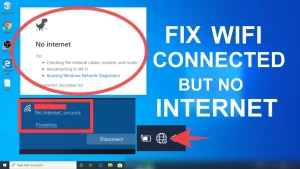When multiple users experience slow speeds while using the same application simultaneously, it can negatively impact productivity and user experience.
Identifying and resolving these performance issues requires a systematic approach to pinpoint the root cause and implement effective solutions.
In this article, we’ll explore the common causes of slow application performance, how to diagnose them, and best practices to resolve the issues efficiently.
Common Causes of Slow Speeds in Applications
Multiple users experiencing slow speeds while accessing an application simultaneously could be due to various reasons. Below are some common causes:
| Cause | Description |
|---|---|
| Bandwidth Bottlenecks | Insufficient network bandwidth leads to congestion, causing slow responses for multiple users. |
| Server Overload | If the server handling requests is overloaded, it can result in delayed responses or timeouts. |
| Database Performance | Poorly optimized database queries or overuse of database resources can slow down application performance. |
| Concurrent Requests | Applications might not be able to handle a large number of concurrent requests efficiently. |
| Application Bugs | Issues within the application code such as memory leaks or inefficient algorithms can cause delays. |
| Inefficient Load Balancing | If traffic isn’t distributed effectively among servers, it can cause one server to be overloaded. |
Steps to Identify the Cause of Slow Performance
1. Monitor Network Usage
- Use network monitoring tools to check if bandwidth is being fully utilized when multiple users experience slow speeds. Tools like Wireshark or SolarWinds can help in identifying network congestion.
2. Analyze Server Resources
- Check CPU, memory, and disk usage on the server. If the server is running at or near capacity, adding more resources (e.g., increasing CPU or memory) or optimizing application performance might help. Tools like Nagios and Datadog are useful for server monitoring.
3. Inspect Database Performance
- Use a database performance monitoring tool such as New Relic, MySQL Workbench, or PostgreSQL EXPLAIN ANALYZE to identify slow queries or excessive database usage. Long-running queries can severely impact performance, especially with high user load.
4. Evaluate Application Logs
- Application logs can offer insights into bugs or errors that are causing delays. Tools like ELK Stack (Elasticsearch, Logstash, Kibana) or Splunk can help you collect and analyze log data.
5. Test Concurrent User Load
- Conduct load testing using tools like Apache JMeter or Gatling to simulate multiple users accessing the application simultaneously. This can help identify thresholds where performance degrades and locate potential bottlenecks.
6. Check for Application-Level Issues
- Inspect the application’s code for any inefficient algorithms or memory leaks. Ensure the application is optimized for concurrent user handling by reviewing the architecture and testing under load conditions.
Solutions to Resolve Slow Application Speeds
Once you’ve identified the cause of the slow speeds, the following solutions can help mitigate these issues:
| Issue | Resolution |
|---|---|
| Bandwidth Bottleneck | Upgrade network bandwidth or implement traffic-shaping techniques to manage bandwidth more effectively. |
| Server Overload | Add more servers to the cluster, scale horizontally, or increase server resources (CPU/RAM). |
| Database Performance Issues | Optimize database queries, add indexing, and consider database replication for high availability. |
| Concurrent Request Issues | Implement caching (e.g., Redis, Memcached) and use message queues (e.g., RabbitMQ, AWS SQS) to handle large numbers of requests. |
| Inefficient Load Balancing | Use a load balancer (e.g., Nginx, AWS ELB) to distribute traffic evenly across servers. |
| Application Bugs | Debug and optimize the application code for better performance under high load conditions. |
Best Practices for Maintaining Application Performance
To prevent performance issues from recurring, it’s essential to adopt the following best practices:
- Implement Auto-Scaling: If you’re using a cloud-based service, set up auto-scaling to automatically adjust server resources during peak times. Services like AWS Auto Scaling and Azure Autoscale are ideal for this.
- Optimize Application Code: Regularly review and optimize the application’s code, particularly focusing on handling concurrent requests and managing resources effectively.
- Use Caching: Caching frequent requests using tools like Varnish, Redis, or Memcached can significantly reduce the load on the application and improve performance for users.
- Load Testing: Perform regular load testing with tools like Gatling or JMeter to ensure the application can handle a growing number of users without degrading performance.
- Monitor Continuously: Use performance monitoring tools like New Relic, Datadog, or Prometheus to keep track of real-time performance metrics and address issues proactively before they affect users.
Additional Resources
To dive deeper into performance troubleshooting and optimization, check out the following resources:
- AWS Performance Monitoring and Tuning Best Practices
- Google Cloud Application Performance Monitoring Guide
- Database Optimization Techniques
- Scaling Web Applications: Horizontal vs. Vertical
Conclusion
Slow application performance when multiple users access it simultaneously can be a complex issue to resolve. By systematically diagnosing the root causes—whether related to network bandwidth, server resources, database performance, or application code—you can implement targeted solutions to improve user experience. Regular monitoring, load testing, and optimization will help ensure that your application continues to perform well, even as user demand grows.
By following these steps and best practices, you can reduce slow speeds and ensure a smooth, efficient experience for all users.
Read also:
- What are Some Effective Methods to Diagnose if My Router is Causing Slow Internet Speeds Rather Than My ISP?
- What steps can I take if my internet connection works on one device but not another on the same network?
- How to fix “This site can’t be reached” error in my browser?
- Why does my internet drop during video calls or streaming?







